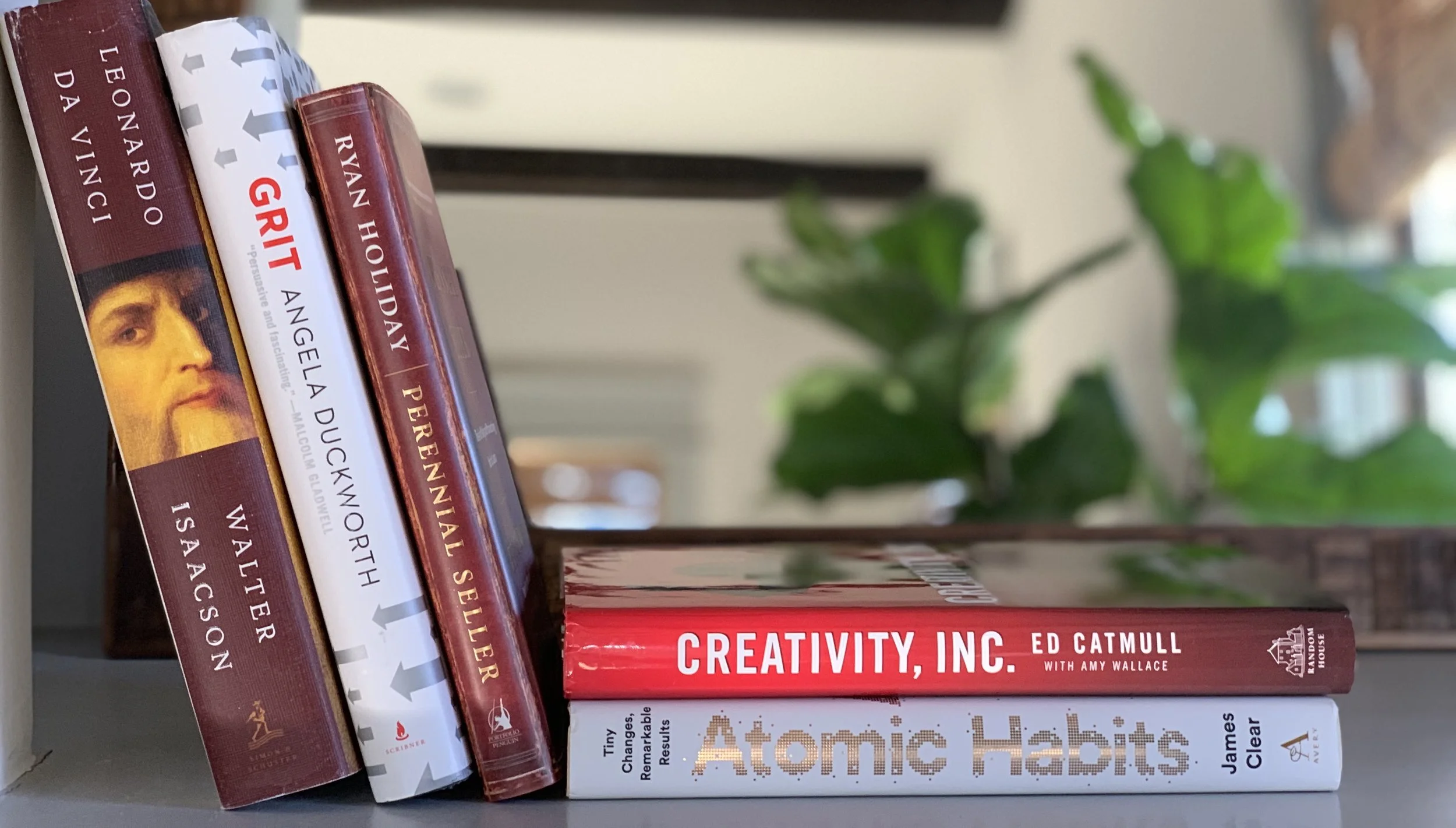Perennial Seller – Ryan Holiday
A useful starting place to understand the entire creative journey–from sitting down to create, through positioning, marketing, and building a platform. Holiday pulls dozens of examples from creative minds throughout history to uncover tactics and best practices. But the underlying strategy consistent throughout the book can be summed up as playing the long game. If you want to create something of lasting value, there are no shortcuts or paths to immediate gratification. Dedicate yourself to your creative process and put in the work.
“To create something is a daring, beautiful act. The architect, the author, the artist–are all building something where nothing was before.”
Grit – Angela Duckworth
In any creative endeavor, you’ll need both direction and determination–what Duckworth defines as “grit”– if you want to make meaningful progress. The book emphasizes the importance of deliberate practice, purpose, and stamina over intensity. The best thing about Duckworth’s writing is that she makes it real. It’s not about a magical experience that leads you to your passion, purpose, or life’s work. Instead, this comes through a discovery period–often messy, serendipitous, and inefficient–followed by years of refinement, and a lifetime of deepening.
“Passion for your work is a little bit discovery, followed by a lot of development, and then a lifetime of deepening.”
Atomic Habits – James Clear
Once you have a sense of direction, you need to build the creative habits to put things into action. The concept behind Atomic Habits is that by stacking tiny habits over time you can achieve compounding, remarkable results. Your creative results, as Clear suggests, are the lagging measure of your habits. He offers great insight into nonlinear growth (breakthrough moments), identity, discipline, and environmental design. The importance of building better systems is hard to overvalue. There’s room for everyone to improve in this capacity, and if nothing else it’s a refreshing reminder: “Does this behavior help me become the type of person I wish to be? Does this habit cast a vote for or against my desired identity?"
“It is only by making the fundamentals in life easier that you can create the mental space needed for free thinking and creativity.”
Creativity, Inc. – Ed Catmull
One of the best modern examples of the impact that comes from harnessing creativity and building a culture where the creative process can thrive. Catmull discusses the evolution of Pixar Animation, including the philosophies and strategies that have established them as creative force. Most notably, the team at Pixar embraces the years of ambiguity inherent to the creative process as a story evolves into its own. Instead of becoming attached to a single storyline or character, they seek out a deep truth at the core of the film–the guiding principle–and craft the story around that. Catmull also emphasizes the role of leadership in cultivating creativity. It starts with loosening your grip, accepting risk, trusting your people, and giving them space to do what they do best.
“There is a sweet spot between the known and the unknown where originality happens; the key is to be able to linger there without panicking.””
Leonardo da Vinci – Walter Isaacson
Throughout history there have been more profound, practical thinkers than Leonardo. But there’s never been anyone as creative as he was across so many different fields–art, science, engineering, technology, the humanities. If you’re hoping to improve your own creativity, you can do worse than studying the life and work of the person who became history’s archetype of the Renaissance Man. The depth of his curiosity and imagination are something to behold. What makes Leonardo such a powerful influence is that he was relatable and not some distant, untouchable figure. His creative genius was self-made, built from personal experience, experiments, and dedication to his craft.
“Be open to mystery. Not everything needs sharp lines.”
And One More…
If five books isn’t enough, check out Mastery by Robert Greene. It’s a comprehensive guide to living a creative life, and one of my favorites. Greene starts with the essentials–discovering your art and immersing yourself in the mindset of an apprentice–and tracks the journey through building creative strategies and, ultimately, mastery.

